Enterprise-architecture – a near-futures report
We’ve explored the current status for enterprise-architecture; we’ve explored the changes to the discipline over the past few decades. Time now, perhaps, to assess the future – or futures, rather – of its likely onward development and direction.
This report is in two parts:
- 1: Near-future – 1-10 years (this post)
- 2: Further-future: 10-50 years
First, though, let’s refresh on a handful of key principles or ideas from those previous two reports and other posts here:
- enterprise-architecture (and arguably every other form of architecture) provides practical support for a core quality-theme that needs to pervade everywhere throughout each enterprise: things work better when they work together, on purpose
- we develop an architecture for an organisation (or, generically, a ‘service-in-focus’), but about the shared-enterprise that forms that organisation’s context
- architecture-work needs always to be in context of the respective shared-enterprise, but may apply to any scope, any scale, any content, any context within that overall broader context
- architecture needs to provide a balance and bridge between structure and story – ‘the organisation’ often focussed more on structure, but always ‘the enterprise’ as story
The other key point is that there’s been a steady expansion of the scope, scale, content and context of enterprise-architecture over the past few decades:
- past: ‘inside-in’ – internally-focussed, scope usually constrained to IT-only
- present (mainstream): ‘inside-in’ and ‘inside-out’ – transactions with the outside-world, always organisation-centric, scope usually still IT-centric
- present (early-adopters): ‘inside-in’ to ‘outside-in’ – customer-focussed, market-aware, scope increasingly beyond IT alone
- future (innovators): ‘inside-in’ to ‘outside-out’ – any scope, any scale, fully aware of shared-enterprise
Or, in visual form, viewing this progression in terms of a maturity-model:
And crossmapped again to the SCAN frame, to indicate the types of challenge that can be faced at each of those maturity-levels for enterprise-architecture:
For many folks in ‘the trade’, much if not most of what follows here should already be visible, or close to the horizon, and is a direct logical progression from that bullet-list just above. As such, it shouldn’t be too controversial or too unexpected – or I hope so, anyway! The main point, perhaps, is that we do need to get moving on all of this, right now – because what’s likely to happen after this near-futures stage is going to be a whole lot harder if we’re not ready for it…
Anyway, some examples that I’m seeing right now:
Organisational strategy
We’re seeing a different relationship beginning to emerge between enterprise-architecture and strategy.
Back in the further past, if enterprise-architecture had any relationship with strategy, it was purely as an order-taker, and often solely for the IT-domain at that.
Perhaps the big first shift from that position was Ross, Weill and Robertson’s book Enterprise Architecture as Strategy. The catch was that at the start it was very strongly IT-oriented: in practice, though, it needs to cover at least the whole organisational scope – a point that Jeanne Ross herself would now emphasise.
The positioning we’re beginning to see now for EA is that it needs to cover the whole of the strategy-to-execution space:
In Zachman terms, strategy sits in a quite narrow space, on the border between Conceptual (row-1) to Contextual (row-2), identifying and defining the organisation’s choices in the current context. A viable architecture-scope now not only extends below that space, providing guidance on how to implement and action the current strategy, but also extends above that space, to identify the elements from the broader shared-enterprise that denote and constrain the context for that strategy.
In more visual form, if strategy is about how an organisation positions itself within a market:
…then architecture feeds into that strategy, by describing its desirability within the context for the market; and comes out of that strategy, ensuring its viability and feasibility, by describing how it can be supported by the services that the organisation already has and that it can develop in change-projects, and how they would all link and work together:
Without that full-scope architecture, the organisation’s strategy risks being neither feasible, desirable nor viable: Not A Good Idea…
Note, though, that for full-scope architecture itself to be viable, feasible and desirable, the organisation and architecture both need to be operating at a maturity-level where it can properly comprehend, as a minimum, the balance between ‘inside-out’ versus ‘outside-in’.
Skills and work
In essence, enterprise-architecture practice comprises a toolkit and skillset on integration, connection, relations, across an entire context. For successful use of that toolkit, everything is or needs to be viewed in terms of fractality – including the assumptions, definitions, tools, frameworks and methods that we use.
Which is a point that, very belatedly, the business world is at last just beginning to comprehend. For example, a recent World Economic Forum survey on most-needed skills for 2020 listed these as the top three skills that will be most needed in the near-future:
- #1: Complex Problem Solving (previously #1)
- #2: Critical Thinking (previously #4)
- #3: Creativity (previously #10)
Note that none of these skills can be automated as such (not at present, anyway), and also that all of them are central to enterprise-architecture. In other words, the skills that we’re developing for our EA work are, as they put it, ‘highly transferrable’ to other domains as well – in fact are those skills around which all domains are starting to revolve. For example, to summarise skills and decision-making in SCAN terms:
…then all of those ‘most-needed’ skills focus on the right-hand side of the frame:
(Any skills to the left-hand side of the frame are amenable to being replaced by automation – and that boundary between the two sides of the frame is moving rightwards almost by the day…)
And yes, they take serious time to learn:
There are a lot of complaints right now about inability to deliver much-needed radical-innovation, arising in part from a shortage of those skills. Yet it’s not a skills-shortage in the regular sense – that’s the point that we need to understand first.
On one side, it’s perhaps more that everyone in ‘the market’ is still trying to dump the many types of costs for developing those skills onto everyone else, as a Somebody Else’s Problem. For example, as that World Economic Forum article puts it:
employers [are] saying “We’d like workers with these skills, and by the way, we don’t want to train them”.
And yet even that isn’t the real problem here. To quote Dave Winer’s catchphrase, “It’s [even] worse than it appears”. So although, as one commenter put it, in response to a Wall Street Journal article:
Is there a skills shortage or is this the result of what happens when we don’t understand what critical thinking is?
…it’s perhaps even more that people do understand what critical-thinking is – and that whilst they know that they need it, they really, really don’t want it. Anywhere. At all…
Critical-thinking is scary. Disruptive. Politically-unacceptable and all that.
In short, there’s a huge ‘anti-want’ for enterprise-architecture, or anything else that requires critical-thinking and the like.
Which means we have a huge ‘sales-problem‘ for any of these skills, even before we start. Oops…
And to make it even more fun, there’s this nasty not-so-little problem for futurists and the like:
Or, to quote that World Economic Forum article again:
just because a profession is producing something desirable, or even necessary to the functioning of society, doesn’t mean society has figured out a way to pay for the care and feeding of its practitioners
And yeah, that’s a point that I know first-hand, all too well… – as do almost all of us out on the ‘bleeding edge’ of any new development. So yes, that’s a concern that we need to address as enterprise-architects – for our own sakes, almost before anyone else’s.
Yet in doing so, we’d also resolve the same issues for everyone else, as their own lives and livelihoods get pushed further and further out of the literal ‘robotic’ work that’s about all that those omnipresent Taylorist-type managers can comprehend at present. And whether those Taylorist-type managers like it or not, this has to happen, and fast – not least because, as Paul Hobcraft warns in his article on radical-innovation mentioned earlier above:
There are whole industries just not getting this. Something has to change or they will be, by others willing to dare and not conservative at heart.
Hence, yes, fast becoming a key focus for enterprise-architecture – and necessarily so, too. Important.
Sustainability and other anticlient-issues
This is another one that only starts to make sense once we begin to move our architectures not just beyond the IT-centric box, but the organisation-centric box too, and start to explore more of the business-implications that arise from the broader shared-enterprise:
For example, it’s only out at that level that we can start to make sense of – or even see at all – the organisation’s current anticlients and other players in the broader shared-enterprise space.
In the early stages, we might understand them only in terms of risk: for example, hidden risks in business-model design, from outsourcing and the like, or co-branding risks, kurtosis-risks, values-risks, ‘Pass the grenade’ risks and other direct and indirect threats to the organisation’s ‘social license to operate’.
Yet by expanding our architectural-view out into this space, we can also explore it in terms of opportunity – and one of the best illustrations of how this can work out well for everyone involved is what happened with Walmart around sustainability.
For some I-don’t-know-how-many-decades, environmentalists and other activists had been hassling Walmart relentlessly about ‘unsustainable business-models’ – saying that Walmart’s supply-chain was destroying the planet, and suchlike. And for those same I-don’t-know-how-many-decades, Walmart’s standard response had been always the same: a somewhat less-than-polite version of “Go away, we’re not interested”. Until one day, about ten years ago now, someone at Walmart Corporate seems to have said “Wait a minute… if we don’t have a sustainable supply-chain, we don’t have a sustainable business!” – in other words, kind of important from a business perspective… And at that point, they turned it round, and reached out to engage with the more serious amongst those activists – in effect saying “Sorry if we weren’t listening before, but we are listening now: what was it that you were saying, please?”
Which worked. For everyone. Sure, there’s still serious work that’s yet to be done, of course – of which we’ll explore more in the next post in this series. But even so far the results have been pretty impressive – such as we can see, for example, from sources such as these:
- Walmart’s summary on sustainability
- Walmart ‘Sustainability Hub’ for its supply-chain partners
- Fortune magazine: ‘Walmart: no conflict between sustainability and good business‘
- GreenBiz: ‘Walmart sustainability at 10 [years]: An assessment‘
And Walmart are by no means alone in this: for another big-corporation example, see ‘Mission Zero‘ and other sustainability-challenges set by former CEO Ray Anderson at carpet-manufacturer Interface Global. To me, this is key work that enterprise-architects can and should be doing right now – with real advantages for everyone’s ‘bottom-line’.
Expanding scope and scale
Other new(er) themes and applications for enterprise-architecture only start to become visible when we explore it more in terms of its fractality. For example, as we extend outwards towards ‘outside-out’, other questions start to arise around what exactly we mean by ‘the enterprise’. In some ways, this should be familiar territory for enterprise-architects, given that ISO 42010 explores some fractality of ‘enterprise’ as a subset and/or superset of the organisation – the latter as in a consortium for example. But once we understand that ‘the organisation’ and ‘the enterprise’ are fundamentally different types of entities, then it all gets a lot more interesting…
In effect, we need to understand that the organisation is not only in context of a broader-shared-enterprise, but that that enterprise itself also intersects with many other shared-enterprises, and is in context of enterprises within other shared-enterprises, nested almost to infinity.
A simple example might be the enterprise of enterprises that intersect across an entire town:
Each shop on the High Street of this larger country town in England is in context of its own market, its own industry. Some of them directly intersect: for example, Mountain Warehouse and Burton The Tailor both operate within the retail end of the clothing-industry, though in somewhat different aspects of it. Likewise Marks & Spencer, somewhat down the street, but that also intersects somewhat with the quick-meal industry of MacDonalds, between there and Mountain Warehouse. And all of them, of course, are vying for the interest and custom of all the various passers-by.
Those shops in turn are in context of the street, the town as streets, for pedestrians, for private-transport in the form of cars and bicycles, motorcycles and more, and public transport via buses and taxis. Other shared-services are above the street: signage and street-lighting, for example. Yet more services are under the street: power, cables, phone-lines, gas-lines, water-sewerage and more. And all of that is literally built upon the history of the town itself – more than 2000 years of history, in this case – about which the town-council’s team of archaeologists has a deep professional interest, of course.
That’s a lot of intersections… – any of which may have anticlient-implications and more for every other enterprise in that space, as in the ‘Sustainability’ section above.
Right now, the most probable place where enterprise-architects are likely to come across this kind of scope and scale is in so-called ‘digital transformation‘ projects, particularly for local and national government. The crucial point though, is that it requires, as a minimum, a much more human approach to the architecture. I’ve already been doing some work of this kind, such as for one of the larger cities in western England; and although they might not yet describe it as such, others have been doing so for years. So it’s nothing new as such, in that sense at least.
The next stage, though, will be to work on a city or suchlike not just as a ‘digital transformation’, but as itself, with all of its many-layered human complexity. And it is happening: I’ve recently been invited to start developing tools and methodologies for the long-term overall ‘architectures of the enterprise’ for all aspects of a large city in Latin America. It’s only early days as yet on that one, of course, but I’d say it’s a real future for enterprise-architecture – even if not at all evenly distributed as yet… 🙂
I’ll stop there for now on this part of the futures-report – over to you for any comments so far, perhaps?
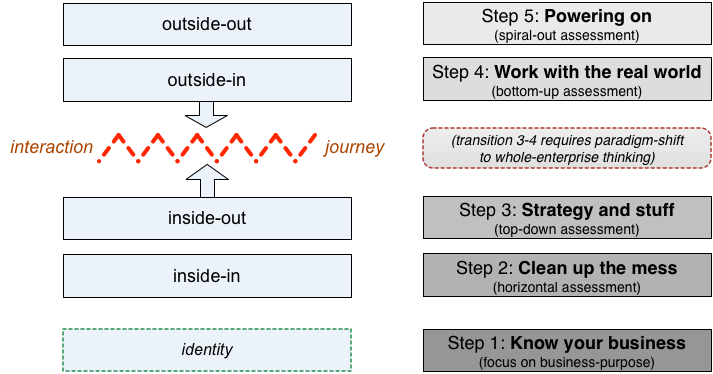
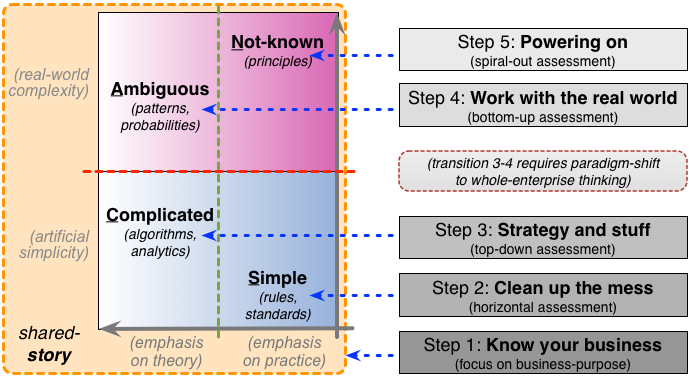
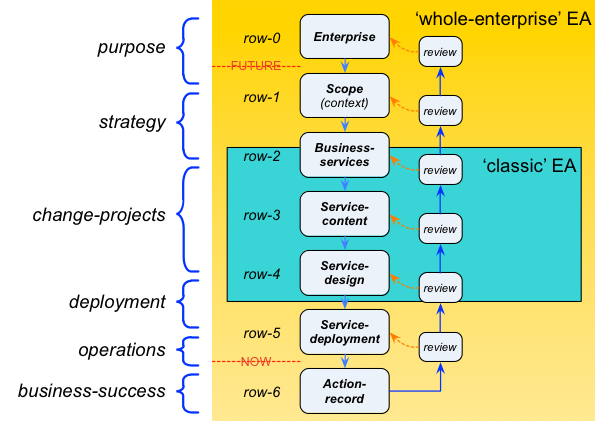
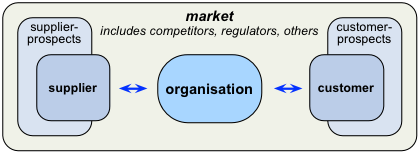
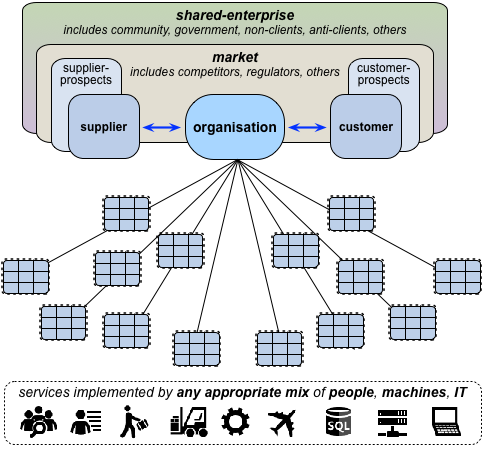

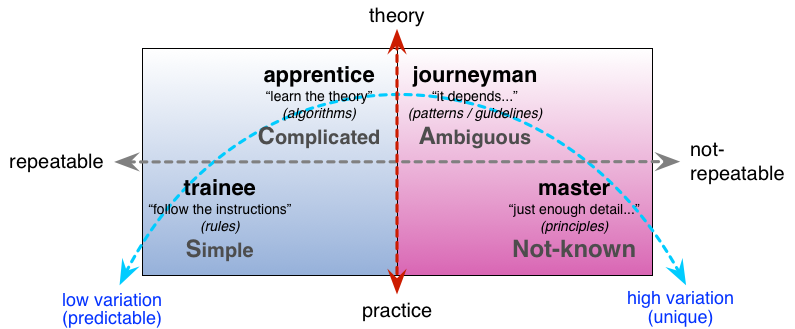

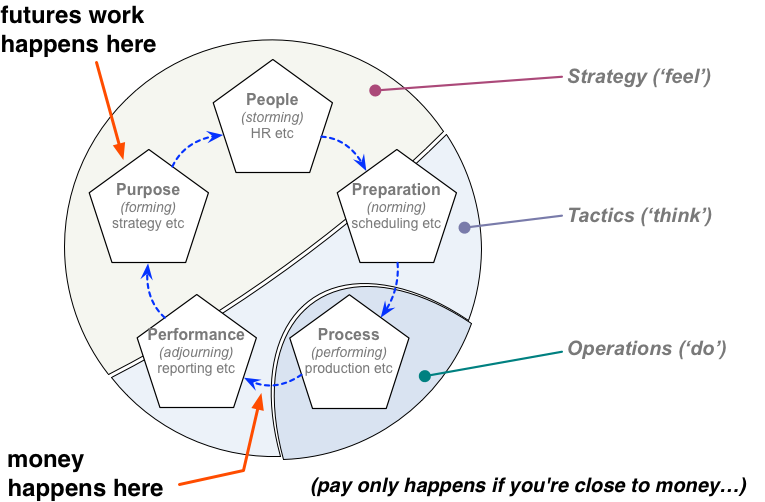


Love the quote: employers [are] saying “We’d like workers with these skills, and by the way, we don’t want to train them”.
This is key to many areas, not solely critical thinking. Businesses are putting all training in the hands of the employees to do on their own. Afterall, they can get “free” training on YouTube or cheap on udemdy and skillshare. Unfortunately, all are in what you call the operations level of training, not the critical thinking area.
So, with this narrow, cost-cutting mentality change in the near future?
Thanks, Pat – and no, I fear it won’t change any time soon. Mainstream business-education is just so far distant from anything resembling how to administer and/or operate a real business that it’s likely to get a lot worse before it gets better (if ever, under the current economic-models, at any rate). Oh well…